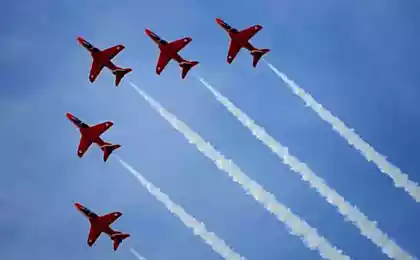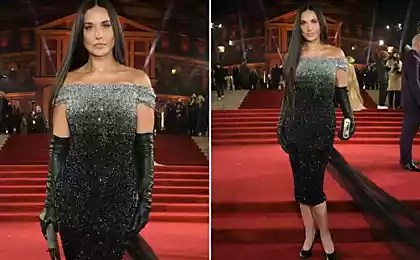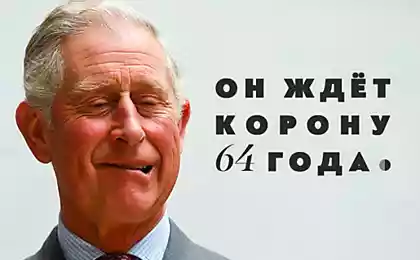465
Charles Moore on how the garbage is destroying the planet + video
The subject is quite serious and relevant today.
TED talk of Charles Moore talks about how he discovered the great Pacific garbage island. "During the week whenever I went out on deck, floated by some plastic junk," wrote Moore in his book "Plastics are Forever?" — I couldn't believe my eyes: how could we dirtied such a huge area? In this dump I had to swim day after day, and it is not the end was in sight."
The era of great geographical discoveries is long gone, and no one of us don't think that somewhere on the globe remained dark spots undiscovered and unexplored secret of the continents, archipelagos or Islands. Reading adventure novels about pirates and conquistadors, our imagination paints a vast, blue expanses of the oceans and seas, exotic Islands, lush greenery, many beautiful birds, fish and animals.
So thought Charles Moore, a young playboy and yachtsman, the son of a wealthy owner of a chemical company. Charles with childhood dreams about sea adventures.14 years ago, after a session at the University of California, he decided to go for a vacation with friends to Hawaii. At the same time Charles wanted to try out the journey my newly purchased expensive yacht. In order to get to exotic Islands, the crew of the yacht sailed not along the coast, and straight through the open expanse of the Pacific ocean. After a few days of sailing Charles realized that his boat is surrounded on all sides with debris, and he and his friends swam in the trash.
"During the week whenever I went out on deck, floated by some plastic junk," wrote Moore in his book, Plastics are Forever? — I couldn't believe my eyes: how could we dirtied such a huge area? In this dump I had to swim day after day, and it is not the end was in sight."
Youthful dreams of romantic adventures in the vast water expanses, exotic lands and Islands with strange animals and plants broke into pieces after this trip. What we are accustomed from childhood to present clean and blue water surface of the oceans, in the modern world turned out to be a phantom and sunk in the summer. The surface of the ocean is no longer admired for its virgin and pristine beauty.
Swimming through tons of plastic debris shook and turned the life of Charles Moore, who wanted to be a pioneer and a traveler. What was ahead of him to open, did not fit in his mind. The young man really was a pioneer because he opened a huge new island, which was later called the "Great Pacific garbage island" (Great Pacific Garbage Patch).
Somehow, the dream is not pleased with Charles, on the contrary he is from being a carefree playboy turned into a serious person and zealous advocate of the environment. Sold all his shares of his father's chemical company, Moore used the money founded the environmental organization Algalita Marine Research Foundation (AMRF), which became involved in the research of the ecological state of the Pacific ocean.
From the reports and warnings, the American oceanographer Charles Moore often waved, not taking seriously his studies. And how was it possible to pay attention to him, because he constantly urged the governments of various countries to reduce the consumption of plastic and the allocation of funds for waste disposal. The powers that be thought that it is not profitable from an economic point of view: it is better to dump all the garbage in the oceans, and cheaper and easier.
Probably a similar fate would expect, and the current report AMRF, but then the environmentalists helped herself nature: the January storms washed up on the beaches of the Islands of Niihau and Kauai, more than 80 tons of plastic waste. The son of famous French oceanographer Jacques Cousteau, who went off to Hawaii for new film, almost had a heart attack at the sight of these mountains of garbage. Plastic "soup" ruined not only leisure tourists, but also led to the deaths of thousands of birds and sea turtles. Since then, Moore's name does not come from the pages of American media. The founder of AMRF warns that if consumers do not restrict the use of plastic which is not processed in the next 10 years, the surface area of the "garbage soup" will be doubled and will threaten not only Hawaii, but for all the countries in the Pacific.
"The great Pacific garbage island" (Great Pacific Garbage Patch) is actually the biggest dump on the planet, growing rapidly from about 1950-ies. She stays almost in one place because of the peculiarities of the North Pacific system of currents with turbulence. According to scientists and oceanographers, the band "soup" stretches over 500 nautical miles from the coast of California across the Pacific past Hawaii and almost reaches the Islands of Japan. The mass of trash Islands is more than four million tons, and covers an area of more than a million square kilometers. "Island" has received several informal names: "Eastern garbage island", "Pacific motorboat" etc. In Russian it is sometimes called "trash the iceberg." In 2001, according to estimates of researchers, the mass of plastic exceeded the weight of the zooplankton in the place where drifting garbage island, six times.
Charles Moore, led by scientists AMRF, after a series of studies, estimated that in this region the drift is about 100 million tons of floating trash. Science Director, Algalita Marine Research Foundation (USA), Marcus Eriksen, said, "Initially, people assumed that it is an island of plastic garbage, which is almost possible to walk. This view is inaccurate. The consistency of the stain is very similar to the plastic soup. It's just endless in size, perhaps twice the continental United States"
In our days, such garbage island can be found in the Sargasso sea, which is part of the famous Bermuda triangle. I used to tell legends about the island from the wreckage of ships and masts, which is drifting in those waters.
Now clean wood fragments replaced by plastic bottles and bags (decaying poison). According to GreenPeace, each year the world produces over 100 million tons of plastic products, 10% of them eventually fall into the oceans. Trash Islands grow with catastrophic progression, and to stop it can only you. Today we should try to limit their use of plastic and go, for example, on the reusable bags from bio-degradable materials, try to buy juice and water in glass bottles or Tetrapak, the alternative is always there.
But most importantly – we must first begin to change their thinking, because, as the great Chinese sage and philosopher Confucius, "I Want to change the world – change yourself". This is the first and very important step to saving the world. Need to put my cue from people like Charles Moore and Marcus Eriksen.
We must finally realize that the consumer mindset, disbelief, permissiveness and immediate comfort, have brought us to the doors of the environmental disaster. They are about to open and probably nothing will change. This will happen in the coming decades, the process has already begun. So, let us try to relate to nature and the world around us with awe and attention, because everything depends on each of us!
Valery Lewicki
Source: www.aej.org.ua/analytics/1273.html
TED talk of Charles Moore talks about how he discovered the great Pacific garbage island. "During the week whenever I went out on deck, floated by some plastic junk," wrote Moore in his book "Plastics are Forever?" — I couldn't believe my eyes: how could we dirtied such a huge area? In this dump I had to swim day after day, and it is not the end was in sight."
The era of great geographical discoveries is long gone, and no one of us don't think that somewhere on the globe remained dark spots undiscovered and unexplored secret of the continents, archipelagos or Islands. Reading adventure novels about pirates and conquistadors, our imagination paints a vast, blue expanses of the oceans and seas, exotic Islands, lush greenery, many beautiful birds, fish and animals.
So thought Charles Moore, a young playboy and yachtsman, the son of a wealthy owner of a chemical company. Charles with childhood dreams about sea adventures.14 years ago, after a session at the University of California, he decided to go for a vacation with friends to Hawaii. At the same time Charles wanted to try out the journey my newly purchased expensive yacht. In order to get to exotic Islands, the crew of the yacht sailed not along the coast, and straight through the open expanse of the Pacific ocean. After a few days of sailing Charles realized that his boat is surrounded on all sides with debris, and he and his friends swam in the trash.
"During the week whenever I went out on deck, floated by some plastic junk," wrote Moore in his book, Plastics are Forever? — I couldn't believe my eyes: how could we dirtied such a huge area? In this dump I had to swim day after day, and it is not the end was in sight."
Youthful dreams of romantic adventures in the vast water expanses, exotic lands and Islands with strange animals and plants broke into pieces after this trip. What we are accustomed from childhood to present clean and blue water surface of the oceans, in the modern world turned out to be a phantom and sunk in the summer. The surface of the ocean is no longer admired for its virgin and pristine beauty.
Swimming through tons of plastic debris shook and turned the life of Charles Moore, who wanted to be a pioneer and a traveler. What was ahead of him to open, did not fit in his mind. The young man really was a pioneer because he opened a huge new island, which was later called the "Great Pacific garbage island" (Great Pacific Garbage Patch).
Somehow, the dream is not pleased with Charles, on the contrary he is from being a carefree playboy turned into a serious person and zealous advocate of the environment. Sold all his shares of his father's chemical company, Moore used the money founded the environmental organization Algalita Marine Research Foundation (AMRF), which became involved in the research of the ecological state of the Pacific ocean.
From the reports and warnings, the American oceanographer Charles Moore often waved, not taking seriously his studies. And how was it possible to pay attention to him, because he constantly urged the governments of various countries to reduce the consumption of plastic and the allocation of funds for waste disposal. The powers that be thought that it is not profitable from an economic point of view: it is better to dump all the garbage in the oceans, and cheaper and easier.
Probably a similar fate would expect, and the current report AMRF, but then the environmentalists helped herself nature: the January storms washed up on the beaches of the Islands of Niihau and Kauai, more than 80 tons of plastic waste. The son of famous French oceanographer Jacques Cousteau, who went off to Hawaii for new film, almost had a heart attack at the sight of these mountains of garbage. Plastic "soup" ruined not only leisure tourists, but also led to the deaths of thousands of birds and sea turtles. Since then, Moore's name does not come from the pages of American media. The founder of AMRF warns that if consumers do not restrict the use of plastic which is not processed in the next 10 years, the surface area of the "garbage soup" will be doubled and will threaten not only Hawaii, but for all the countries in the Pacific.
"The great Pacific garbage island" (Great Pacific Garbage Patch) is actually the biggest dump on the planet, growing rapidly from about 1950-ies. She stays almost in one place because of the peculiarities of the North Pacific system of currents with turbulence. According to scientists and oceanographers, the band "soup" stretches over 500 nautical miles from the coast of California across the Pacific past Hawaii and almost reaches the Islands of Japan. The mass of trash Islands is more than four million tons, and covers an area of more than a million square kilometers. "Island" has received several informal names: "Eastern garbage island", "Pacific motorboat" etc. In Russian it is sometimes called "trash the iceberg." In 2001, according to estimates of researchers, the mass of plastic exceeded the weight of the zooplankton in the place where drifting garbage island, six times.
Charles Moore, led by scientists AMRF, after a series of studies, estimated that in this region the drift is about 100 million tons of floating trash. Science Director, Algalita Marine Research Foundation (USA), Marcus Eriksen, said, "Initially, people assumed that it is an island of plastic garbage, which is almost possible to walk. This view is inaccurate. The consistency of the stain is very similar to the plastic soup. It's just endless in size, perhaps twice the continental United States"
In our days, such garbage island can be found in the Sargasso sea, which is part of the famous Bermuda triangle. I used to tell legends about the island from the wreckage of ships and masts, which is drifting in those waters.
Now clean wood fragments replaced by plastic bottles and bags (decaying poison). According to GreenPeace, each year the world produces over 100 million tons of plastic products, 10% of them eventually fall into the oceans. Trash Islands grow with catastrophic progression, and to stop it can only you. Today we should try to limit their use of plastic and go, for example, on the reusable bags from bio-degradable materials, try to buy juice and water in glass bottles or Tetrapak, the alternative is always there.
But most importantly – we must first begin to change their thinking, because, as the great Chinese sage and philosopher Confucius, "I Want to change the world – change yourself". This is the first and very important step to saving the world. Need to put my cue from people like Charles Moore and Marcus Eriksen.
We must finally realize that the consumer mindset, disbelief, permissiveness and immediate comfort, have brought us to the doors of the environmental disaster. They are about to open and probably nothing will change. This will happen in the coming decades, the process has already begun. So, let us try to relate to nature and the world around us with awe and attention, because everything depends on each of us!
Valery Lewicki
Source: www.aej.org.ua/analytics/1273.html
Obedient and diffident children will be up to 40 years to pull money from you
That food was the cure - 16 simple rules






















